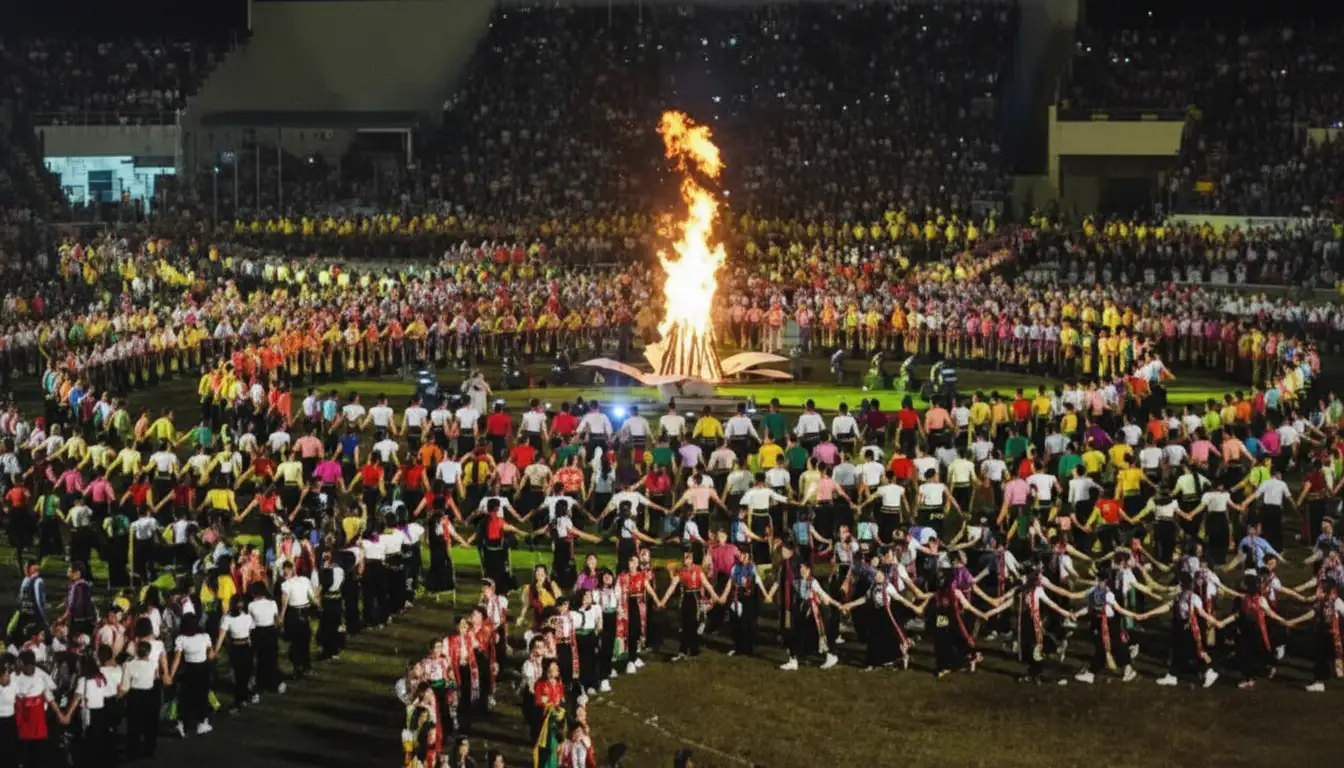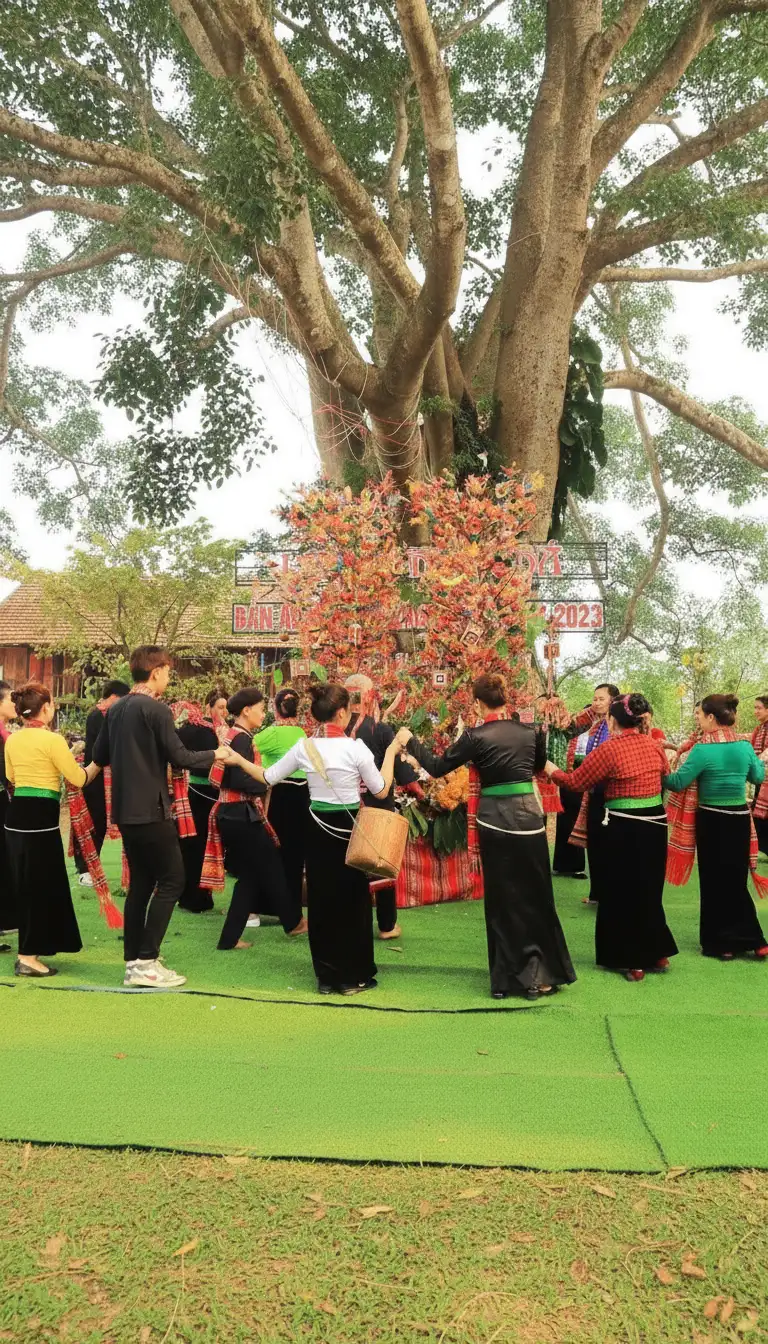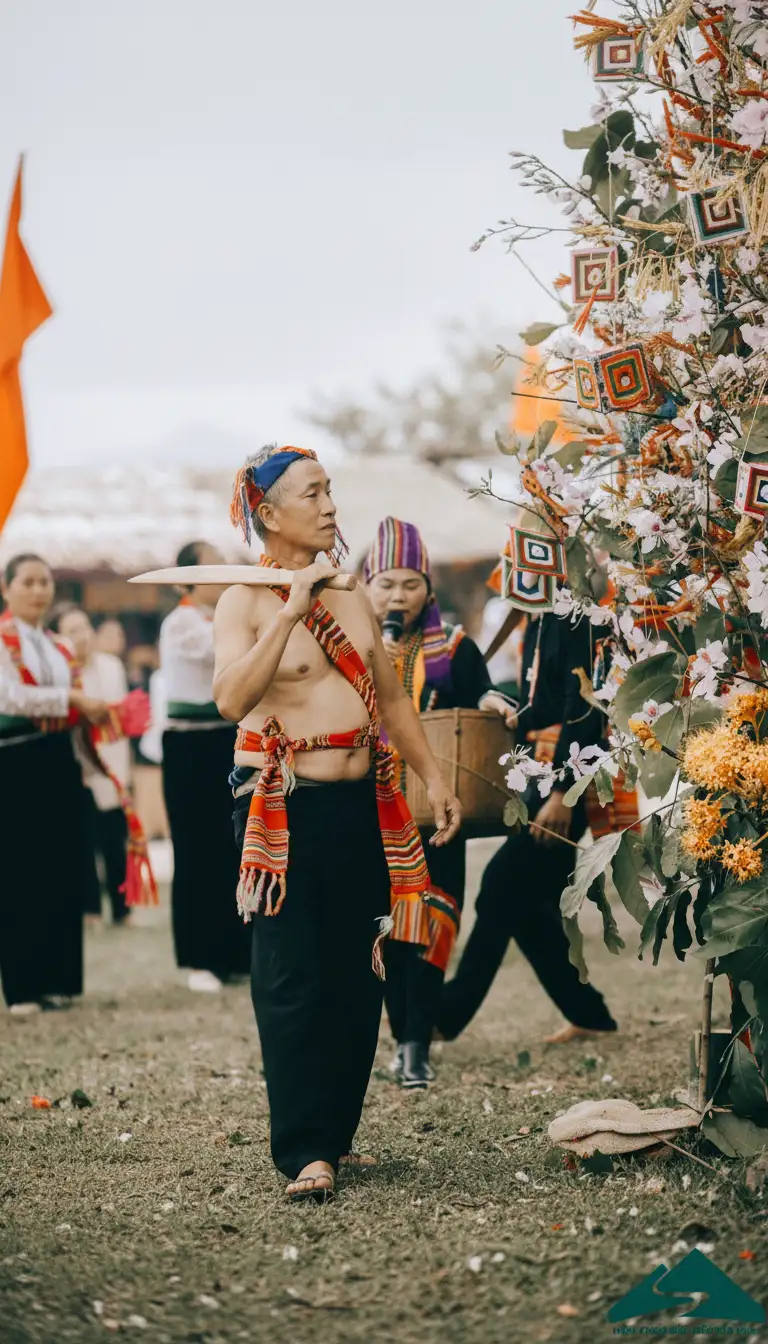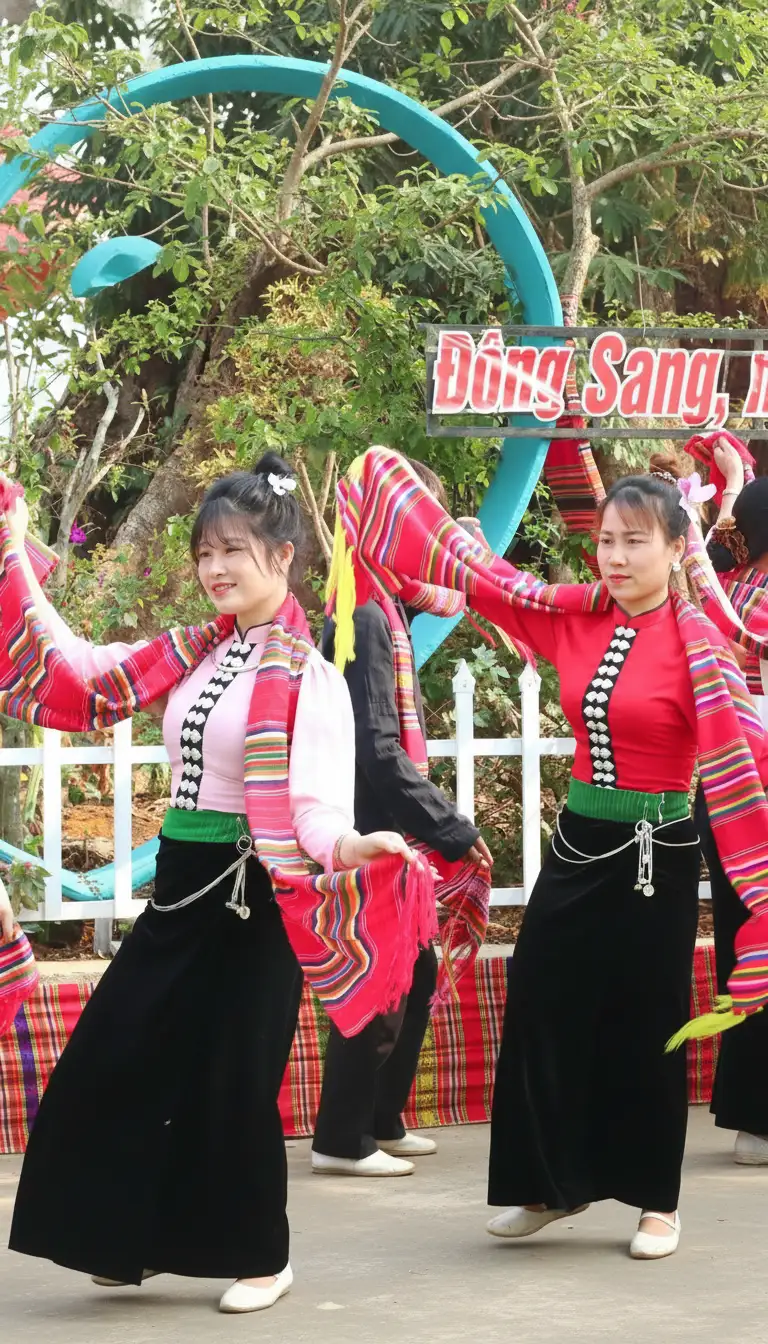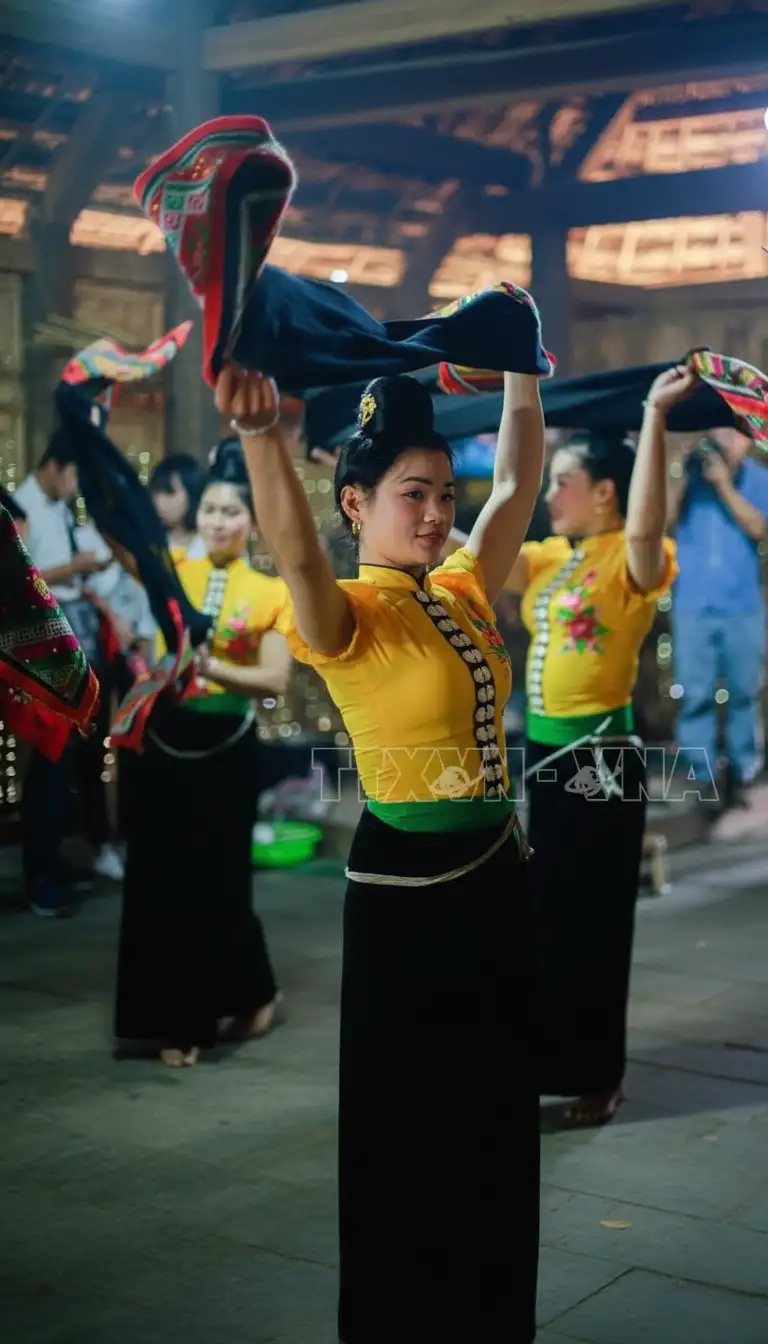Quick Facts
| Data Field (Title) | Content | Icon/Note |
|---|---|---|
| Official Vietnamese Name | Lễ hội Hết Chá | Also sometimes called Lau No or Xăng Khan in related Thai/Mường dialects. |
| Ethnic Group | Primarily celebrated by the Thái ethnic group (specifically the White Thái). | |
| Location | Áng Village (Đông Sang Commune), Mộc Châu District, Sơn La Province, Northwestern Vietnam. | Held in the mountainous region during the Ban Flower (Bauhinia variegata) blooming season. |
| Date | The 3rd Lunar Month (coinciding with the Ban flower season) | This period marks the start of the new farming cycle. |
| Significance | A profound spiritual and cultural tradition expressing gratitude to the Shaman (Mo) and praying for fertility, peace, and abundant harvests. | |
| Cultural Heritage | Recognized as a National Intangible Cultural Heritage of Vietnam (2015). |
I. Overview and Spiritual Meaning
A Thanksgiving for Healing
The Hết Chá Festival is a central spiritual event for the Thái (Tay) people in Mộc Châu, Sơn La Province. Its primary purpose is a thanksgiving ceremony (Hết Chá literally means “finished the offerings” or “finished the ceremony”). It is an occasion for those who were cured of illness in the past year to express their deep gratitude and respect to the shaman (Mo or Phi Mun) who healed them through rituals and prayers.
The festival also serves as a critical event to welcome the new farming season, where the community prays for:
Harmony and Fertility: Harmony between heaven, earth, and people.
Abundant Harvests: Good weather and prosperity for the coming crop season.
Community Well-being: Health and happiness for all villagers.
The Sacred Flower of Life
The festival often takes place around the Xăng Bok—a central ceremonial feature decorated with sacred flowers—symbolizing the connection between the human and spirit worlds.
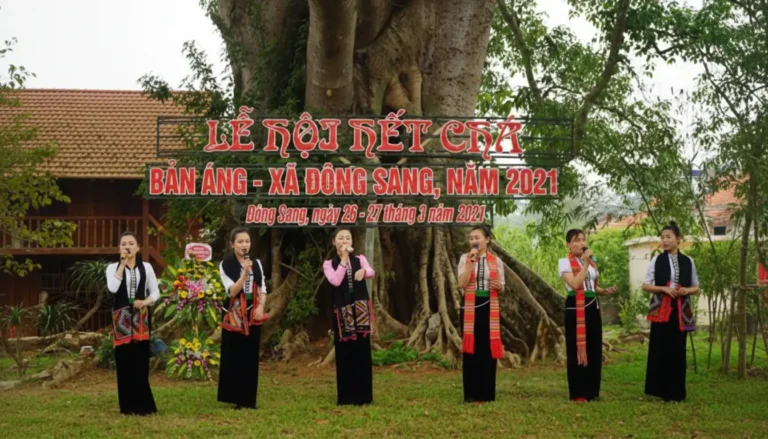
II. Festival Activities and Rituals
The festival is composed of both solemn thanksgiving rituals and vibrant community-wide performances.
1. The Ritual of Gratitude
Worshippers’ Offerings: Individuals (often referred to as ‘adopted children’ of the shaman after their healing) bring gifts and offerings to the shaman to thank him for his intervention and connection to the gods.
Shaman’s Honor: The shaman, in turn, performs rituals to thank his own spirits and masters, inviting them to attend the ceremony and receive the gifts. The ritual reflects a deep moral and humane value system based on respect, gratitude, and community support.
2. Traditional Arts and Performances
Folk Dancing (Xòe Dance): The festival features the traditional Xòe folk dance, involving couples (Bao Sao) dancing around the sacred Xăng Bok flower, symbolizing hope and fertility.
Reenactments and Storytelling: Participants perform ancient tales and folk plays that convey farming knowledge, moral lessons, and the history of harmonious living within the community.
Singing and Music: Traditional Thái songs and music fill the air, reinforcing the cultural identity and unifying the community as they celebrate the arrival of spring and a new cycle of life.
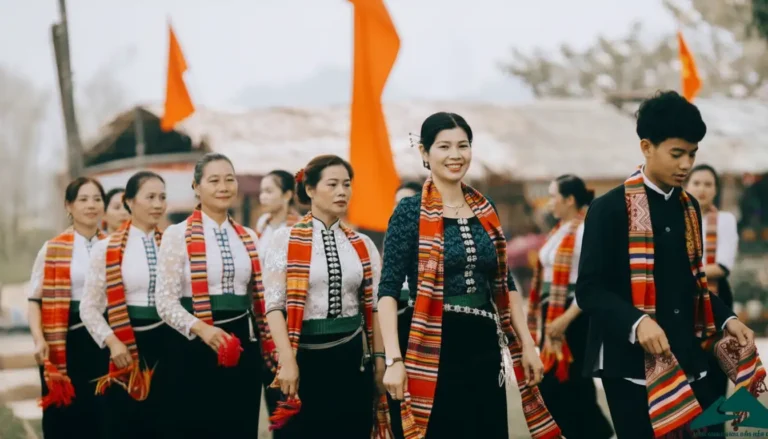
III. Visitor Information
| Guide Field | Details |
|---|---|
| Unique Timing | The festival coincides with the blooming of the beautiful Ban Flowers (Vietnam’s mountain orchid tree), making the mountainous scenery of Mộc Châu particularly picturesque. |
| Cultural Immersion | Hết Chá provides a rare and authentic opportunity to witness the spiritual core of the Thái ethnic minority's culture, including the role of the shaman and the profound respect given to health and tradition. |
| Atmosphere | Expect a deeply spiritual and celebratory atmosphere, focused on collective well-being and the transition into a new, prosperous year. |
| Location Note | Mộc Châu is a famous destination in Sơn La Province, known for its vast tea plantations and ethnic minority culture. The festival is a central pillar of the local tourism and cultural promotion efforts. |
